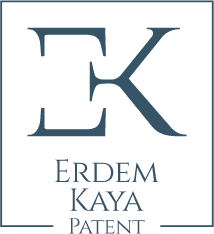In this series titled “Patent Treasure,” I will try to share with you the knowledge and experiences I have gained in this process using a straightforward language and a different perspective.
Why is our series called “Patent Treasure”? Because treasures are rarely found by chance; reaching them requires dedication, belief, time, and effort. Technology is similar. Inventing something and even obtaining a patent is just the beginning; commercial success is a phenomenon that results from managing numerous parameters correctly. However, once you learn “how to find, extract, and evaluate the treasure,” there is no reason why you shouldn’t achieve success and prosperity.
Let’s slowly delve into our topic. First, I want to look at the fundamental elements that constitute companies (or universities, public institutions, NGOs).
Companies have three main types of assets: tangible assets, financial assets, and intangible assets. As you know, tangible assets include items such as buildings, land, and fixtures registered to the company, while financial assets comprise liquid values like money, checks, and promissory notes.
But have you ever thought about what intangible assets include and their importance to companies?
Intangible assets of companies are grouped into three subcategories: human capital, relational assets, and structural assets. Numerous parameters, such as the motivation of employees, their loyalty to the company, and their level of knowledge, determine the value of a company’s human capital. Criteria like the company’s brand reputation and the relationships and systems it establishes with all stakeholders are used to evaluate relational assets.
Structural assets, on the other hand, include any documented information (or transferred to software), preferably templated and incorporated into corporate memory, produced by human capital and/or relational assets. For instance, administrative documents, technical documents used in production, policies, internal regulations, databases, and similar items constitute a company’s structural assets.
All these structural assets, produced with the influence of employees and/or stakeholders, are extremely valuable and must be protected effectively. Otherwise, these assets could easily fall into the hands of others, and a document or piece of information you created with years of experience could be used by a competitor without any of the hardships you endured. Worse yet, like the proverbial bold thief who shouts down the homeowner, your imitators could emerge as competitive threats.
At this point, intellectual property rights, which are considered part of structural assets, come into play. Intellectual property rights can provide effective legal protection for all structural assets, enabling companies to maintain competitiveness and increase their value. For example, patents protect inventions that solve technical problems, designs protect aesthetic creations, and trademarks protect names/logos used to identify products/services. Furthermore, critical administrative/technical documents used in the company can be considered trade secrets and evaluated under the umbrella of intellectual property as know-how.
So, do intellectual property rights add extra value to companies?
The answer is definitely yes. The total value of intangible assets of globally recognized brands, worth hundreds of billions of dollars, is often tens or even hundreds of times greater than their tangible and financial assets.
Ultimately, companies that effectively protect every kind of value-added output they produce gain a strong and sustainable competitive advantage in the market, which translates into rapid and profitable growth in their financials. For example, a patented product with advantageous features compared to its market equivalents can quickly gain significant market share thanks to the legal protection provided by the patent and the support of a smart sales and marketing policy, maintaining that share for a long time. This ensures the company’s balance sheets are in a much better position than they would be without the patent. Moreover, additional support elements like tax advantages for patent holders, certain investment incentives, or patent-based credit facilities also provide significant benefits to companies.
And there’s also the hidden side of the iceberg. R&D projects with high commercial potential but not yet commercialized. These projects don’t yet impact the company’s revenue side, and during company valuations, such as mergers or public offerings, they are often not considered to the extent they should be. This is akin to selling a house with treasure buried underneath without taking the treasure into account. The real value might lie here because many investors consider the future performance created by R&D efforts as much as the value the company creates today. Therefore, surfacing these not-yet-commercialized projects during valuation processes and valuing them using scientific methods specific to technology valuation is crucial.
I hope I have provided useful information.
Best regards.
Erdem Kaya






